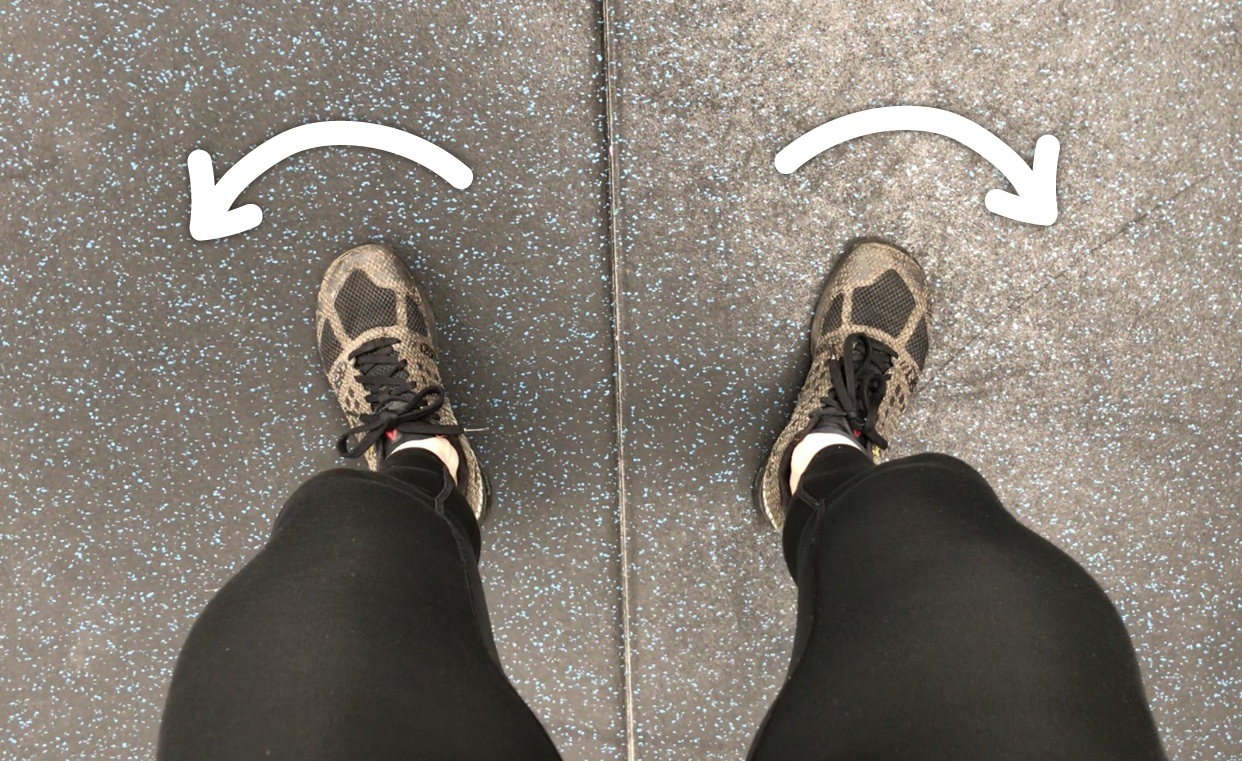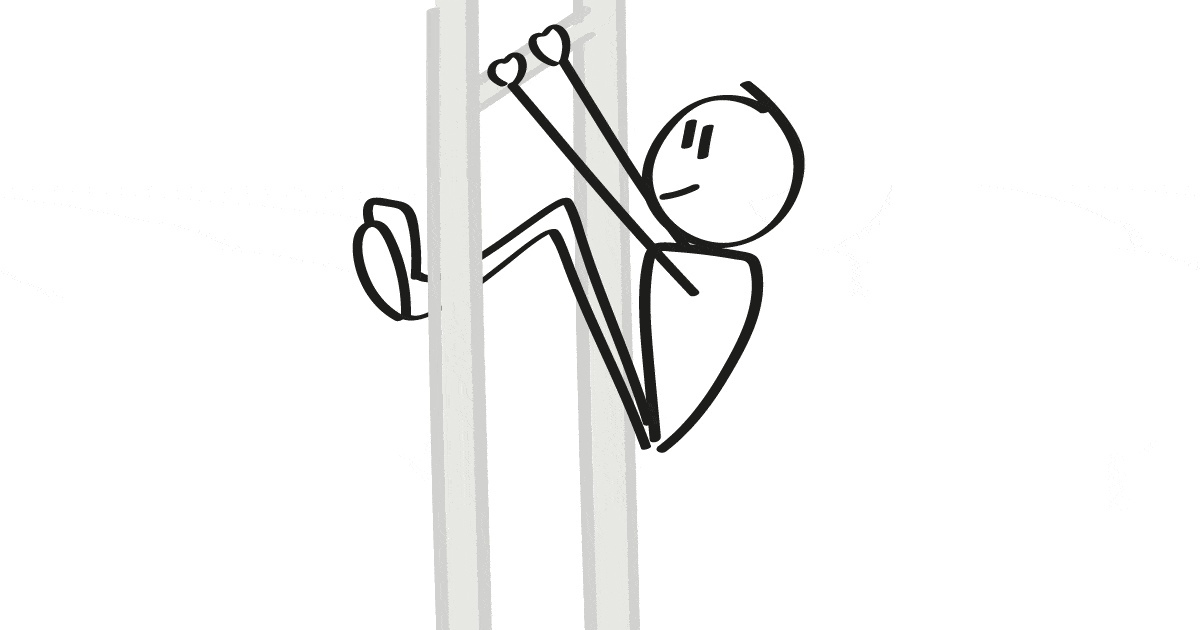Definition of a Black Belt: “Someone who has mastered the basics of a specific form of martial arts.”
I know what you are thinking. “Brian, we don’t have a belt system in CrossFit... I think you have clearly been kicked in the head too many times.”
Let me backup for a second and give some background.
When I was 8, my parents signed me up for karate classes. Three and a half years later I stood in front of a scary panel of master instructors while I tested for my black belt. Even though I was only 12 at the time, something one of the instructors said has stuck with me for life. He said,
“Today you are testing for your black belt. It has taken you years to get here, but don’t forget what you are accomplishing today. A black belt means you have mastered the basics, but your journey is just beginning.”
Fast forward to 2011 when I opened our box, this concept of mastering the CrossFit basics became a cornerstone of my daily programming for the next 5 years. You may not know it, but the founder of CrossFit®, Coach Greg Glassman, came up with his own set of basic 9 foundational movements back in 2002. Much like how the foot pivot is critical to multiple karate kicks and punches, these basic CrossFit movements are essential to becoming a faster, stronger, more efficient athlete.
CrossFit Basics: What should I focus on?
With the Open wrapped up (and another coming in the fall) - now is a great time to brush up and review the 9 foundational CrossFit movements.
They are:
- The Air Squat
- Overhead Squat
- Front Squat
- The Med Ball Clean
- Shoulder Press
- Push Press
- Push Jerk
- Deadlift
- Sumo Deadlift High Pull

If you’re reading this and just beginning CrossFit, keep this in mind: these movements show up all throughout most programming, in one form or another.
The front squat is the foundation of a wall ball, the deadlift is the foundation of picking up any weighted object off the floor from kettlebells to barbells, and of course we have the king of all foundational movements: The Air Squat.
It would almost be faster to list the CrossFit movements that don’t have an air squat in them to count the ones that do. Every box jump, burpee, thruster, and kettlebell swing have pieces of the air squat in them.

CrossFit Basics and the CrossFit Open
Now let’s go a step further and consider the CrossFit Open. Sunny wrote a fantastic article for WODprep called Numbers Don’t Lie: CrossFit Open Movements to Master for 2019. In it, he breaks down the movements you are most likely to see this year based on the statistics of past Opens - which has now been updated to include the February 2019 Open numbers.
I don’t want to ruin the surprise, but let’s just say 6 of the top 12 movements include a form of the air squat. Let’s just consider that for a second. 50% of the movements you are most likely to see require you to have a solid squat.
CrossFit Basics: The Air Squat
Now, you might think your squat is great. Your coach hasn’t mentioned anything in months and it gets the job done day in and day out...
But let me ask you this, when is the last time you spent 20 minutes just trying to perfect your air squat?
When is the last time you set up a slow motion camera and watched your squat from the front and side frame by frame?
What would you learn about your form if you did? Perhaps you might notice you favor your left leg over your right and you actually begin by leaning to one side as you squat. I used to see this a lot as a coach. We all have our favorite legs, right? A pistol (one-legged squat) will reveal yours.
Quick Fix #1
Simply slow down and make sure your weight is evenly distributed throughout the entire movement. It may seem easy, but you would be surprised how many athletes I coached had tight hips, previous injuries, or just limited mobility that made them favor one leg over another.
Maybe you realized that your ankles collapse just slightly as lower down into the squat and your knees cave in slightly. Nothing will kill the efficiency of a squat faster than losing power through collapsing knees. Not to mention it hurts. Knee sleeves can be a blessing and a curse because they mask some of the problems.
Quick Fix #2
Next time you practice your air squats, start out by planting your feet firmly on the ground and then thinking about screwing your feet into the floor below you. Your left foot will “screw” counter-clockwise and your right foot will “screw” clockwise. Your feet actually don’t move here. You are just applying enough rotational force that you feel your feet moving in your shoes. The result will be your knees driving out slightly and feeling really firm.

You can test this by first screwing your feet into the ground and then reaching down and pushing gently on your knee towards your other knee. If it feels really loose and easy to move, you don’t have your feet screwed in. But if you do it right, your knee should feel like an iron rod is going through it. It should feel strong and firmly in place. Now, keep this same force applied all the way through your squat. Focus. Take it slow and just keep thinking about your knees.

Do they feel solid? If so, you have probably fixed your collapsing arches in a matter of minutes. Plus, your squat probably just got a little deeper because now your hips are a little more open.
Ok, let’s look at one more example. The dreaded butt-wink. If you aren’t familiar with this funny named squat error, it is when your hips round down just slightly towards the bottom of your squat.
Again, a slow motion video will let you know pretty quickly if you have a butt-wink or not. Just watch frame by frame and watch your tailbone throughout the squat. Does it seem to move towards the floor as you lower down? Or does it stay in a nice straight line with your spine?
Quick Fix #3
This squat error may be due to tight hamstrings or overall hip mobility issues. But I will tell you I have personally helped many athletes not by focusing on hamstrings, but on their core. So here is what you can try. Right before you about to squat and right after you have screwed your feet into the ground, I want you to think about your hips. Are they even, tilted forward, or perhaps tilted back.
Not sure what I mean?
Imagine your pelvis is filled with water like a big bowl. Are you going to spill water out the front or back? Or will that water stay in the bowl? If it is going to spill out, you need to fix it before you squat.
The answer: Flex your abs about 30%. Not enough that you can’t talk or breath, but enough that if somebody walked by and slapped you in the stomach, it wouldn’t hurt. When you do this, you should notice that your pelvis levels out. No water spilling. Now slowly attempt your air squat again and focus on keeping that flex going in your abs. You might have just fixed your butt-wink. Even if you didn’t and you have more of a flexibility issue, you would have still improved your air squat considerably.
CrossFit Basics: Practice Makes Perfect
Focusing on movements like the thruster, wall ball, and box jumps are really important for every day WODs and competitions. Before you go worrying if you have a solid 95/65 pound thruster, perhaps your time would be better spent taking a week and just going over the CrossFit basics again.
If you have limited time, start by focusing on the air squat. It will get you the most bang for your buck and you can practice it at home, work, or the gym. If you have more time, branch out and practice your deadlift (which by the way has the same ab flex and foot rotation as the air squat) and your presses.
You can actually do the same rotation trick holding a barbell or pull-up bar with your hands that you can do with your feet. Grab the bar and try slightly rotating your left hand counter-clockwise and your right hand clockwise. You should feel your shoulders become more stable when you do. This can have a huge impact on all of your presses as well as CrossFit Open favorites like toes-to-bar...

Slow is smooth, smooth is fast.
CrossFit is a lot of fun and there will always be time to practice the fancy movements like ring and bar muscle ups. But don’t forget that you must lay down a solid foundation before you can build anything of value on top.
I once volunteered for the halftime show at the Super Bowl. Bruce Springsteen was playing and we were in charge of moving huge pieces of stage into place from outside the stadium to the 50 yard line in a matter of a few minutes. The guy who ran the practices went by the name “Cap”. Cap had a bullhorn and would yell out instructions. But the thing I remember him saying more than anything else was “Slow is smooth. Smooth is fast.” Meaning, get the basics down first and speed will follow naturally.
Next time you’re in the gym, focus first on the basics of CrossFit. You might just have your best year yet.
Speaking of, it’s never too early to start thinking about that October 2019 Open. Check out this article on changes to this year’s Open, and what to expect.

Hi this is so me.
And with all the injuries i have most of the info from you help me to improve the way I Crossfit
Many thanks
thanks for reading – hope this helps!
[…] CrossFit Basics: Are You A Black Belt? […]
[…] CrossFit Basics: Are You A Black Belt? […]
[…] Harry has been doing CrossFit for two years and still can’t squat below parallel. […]